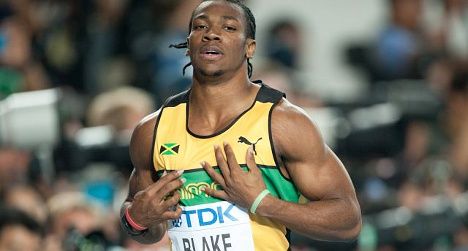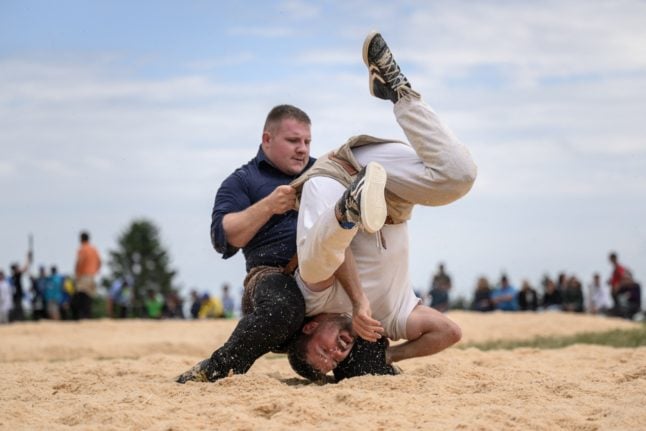Blake, 21, had raced to gold at the worlds in Daegu in 9.92 following the sensational disqualification of favourite and world record holder Usain Bolt.
Thursday’s showing was a new personal best for Blake by 0.07sec as he ousted compatriot Asafa Powell by 0.13sec and American world silver medallist Walter Dix (10.04).
Bolt skipped Zurich while Powell was making his return to the track after missing Daegu with a troublesome groin injury.
Grenadian teen Kirani James also managed a personal best time of 44.36sec in the men’s 400m to add to his just-garnered world title.
“I am not surprised to win in a personal best time, even though I am just back from Daegu,” Blake told reporters.
“Usain Bolt told me I’d win tonight but to make sure I do it sub-10 seconds,” Blake added speaking to BBC Sport.
“The future looks good for me. I’m looking forward to the Olympics next year,” Blake concluded.
James was for his part delighed to show that his own Daegu success was no flash in the pan as he hared down the home stretch to see off LaShawn Merritt once again and in the process knock a quarter of a second off his personal best.
“I ran a perfect race. The conditions were better than in Daegu and that’s why I was able to better my personal best. It’s been a great season,” said an exultant James.
Jamaica’s Jermaine Gonzales was third in 45.39sec.
Elsewhere, Cuban star Dayron Robles bagged the 110m hurdles in 13.01sec, edging out world champion Jason Richardson to erase some of his Daegu disqualification disappointment.
“I felt great today until the seventh hurdle – otherwise I’d have run under 13sec,” insisted Robles. “But it’s very satisfying after what happened in Daegu.”
Australian world champion Sally Pearson was again too good for all comers as she won the women’s 100 metres hurdles in 12.52 ahead of US rival Dawn Harper (12.81) and Canada’s Phylicia George (12.84) while Carmelita Jeter, the 100m world champion, took the women’s 200 metres in 22.47sec, going one better than her Daegu showing at that distance.
Allyson Felix of the United States was second in 22.40 and Jamaica’s Shelly-Ann Fraser completed the podium in 22.59.
In the women’s 800m gold went to Russia’s world champion Mariya Savinova in 1:58.27 with silver claimed by American Alysia Johnson in 1:58.41. Britain’s Jennifer Meadows took the bronze in 1:58.92 but South Africa’s Caster Semenya could only manage fifth in 1:59.77.
World champion Ezekiel Kemboi won the 3,000m steeplechase with fellow Kenyans Silas Kiplagat and Haron Keitany completing the podium.
Another world champion winner Thursday was Vivian Cheruiyot, who bagged the women’s 5,000 metres in 14:30.10 ahead of Sally Kipyego and Linet Chepkwemoi Barasa in another Kenyan one-two-three.



 Please whitelist us to continue reading.
Please whitelist us to continue reading.
Member comments